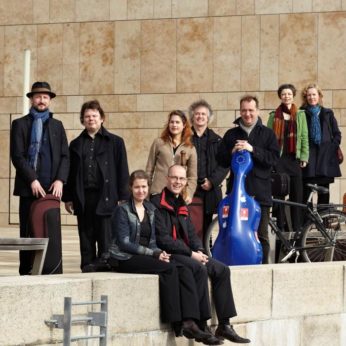Composer: Georg Philipp Telemann (b. 1681 - d. 1767)
Performance date: 03/07/2016
Venue: St. Brendan’s Church
Composition Year: circa 1706-11
Duration: 00:08:04
Recording Engineer: Richard McCullough, RTÉ lyric fm
Instrumentation: 2vn, 2va, 2vc
Instrumentation Category:Baroque Ensemble
Artists:
Concerto Copenhagen (Peter Spissky, Fredrik From, Antina Hugosson [violins], Torbjörn Köhl [viola], Kate Hearne [cello], Mattias Frostenson [bass], Fredrik Bock [archlute, guitar], Lars-Ulrik Mortensen [harpsichord, director]) -
[baroque ensemble]

Such fully scored
sonatas as this String Sextet in F minor,
TWV 44:32 were quite common during the seventeenth century but became more
and more rare during the eighteenth century when composers turned their focus
to the solo and trio sonatas. Telemann’s five-part sonatas for strings belong
to a collection of five sonatas with this scoring, although four of this
collection including TWV 44:32 have obbligato cello parts occasionally earning
them the title of ‘sextet,’ however they are fundamentally in five parts
throughout. These sextets appear to have been known to the Bach family and
manuscript scores (Telemann, Ein Sestett,
in Partitur) were included in the 1789 auction catalog of CPE Bach’s
estate.
The expanded trio stile antico scoring of the opening slow
movement of TWV 44:32 is one of the most interesting in Telemann’s quintets.
Here the composer invokes the recitative in his use of unsettled harmonic
progressions, stepwise subject movement, close imitation and suspensions
evocative of sacred vocal music. Other archaic techniques are also found in the
Sarabanda of this sonata such as the tierces de Picardie that ends the
movement. The second movement of TWV 44:32 contains one of the more impressive
triple fugues in Telemann’s sonatas, comparable only to that of TWV 44:5. Later
in the movement the fugue’s progression is curiously interrupted by a
sensational progression of dotted rhythms in the violins over a dominant pedal
in the bass – music which later returns
as a codetta.
Copyright © 2024 West Cork Music. All rights reserved.
Designed and developed by Matrix Internet